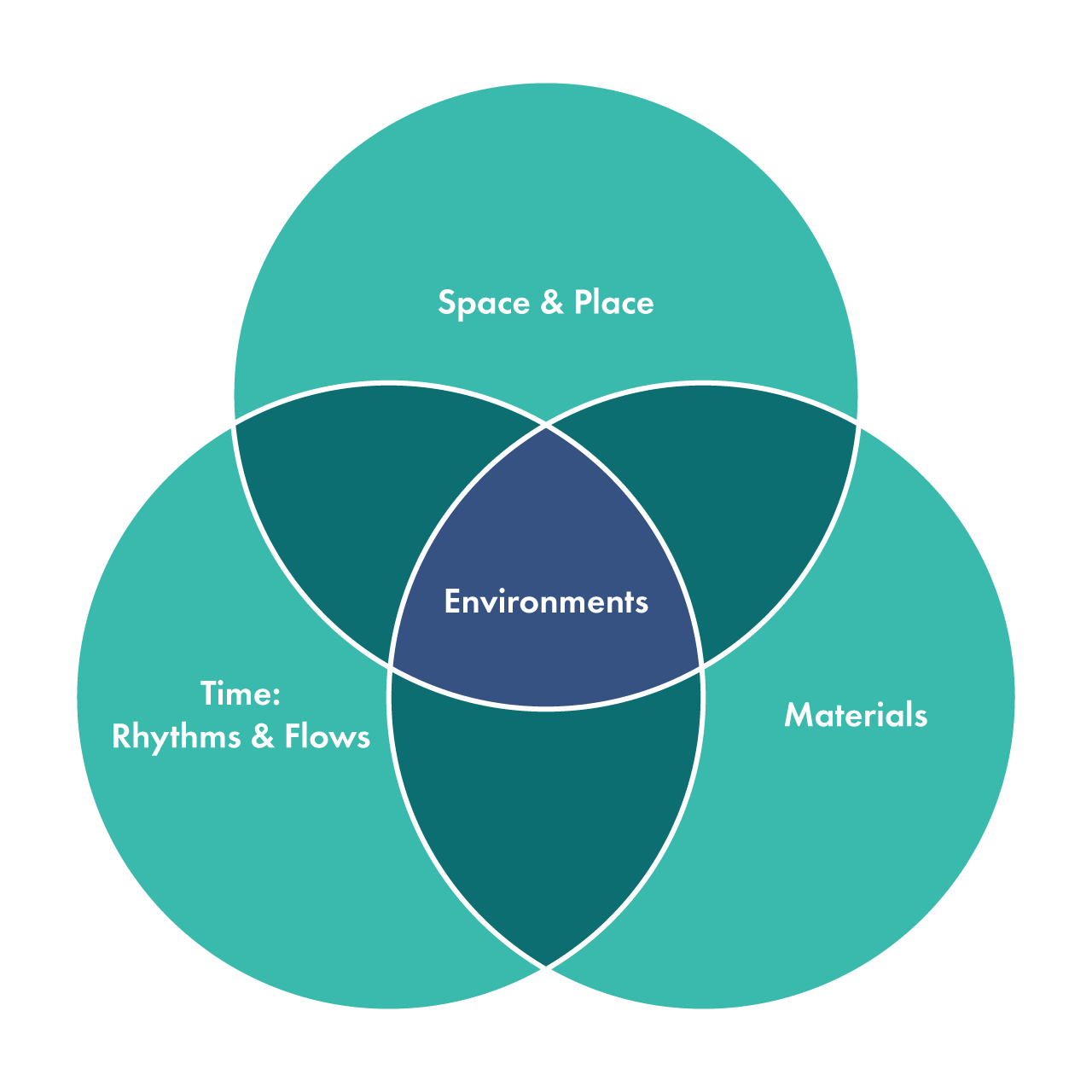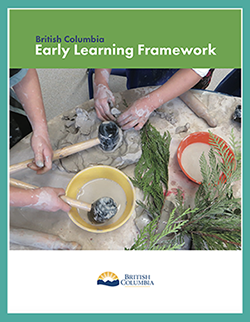
Module 1: The Principles of Early Learning
Environments and Early Learning
Environments are integral to well-being and learning.
Early care and learning environments are key in shaping the experience of children and adults. Children and adults live and learn in relationships with the people around them, but are also very affected by their relationships with spaces and materials.
Environments are made up of three elements
- Space
- Materials
- Time
Each of these elements can be discussed and reflected on individually. However, they are woven together with people, place, ideas, and culture. Each influences the other.

How furniture, structures, and objects are organized in a space shows how people can move and relate to others in that space.
Arrangement of spaces are important. They can invite
- Small and large group interaction, inspire collaborative learning, and celebrate diversity
- Children to explore and express their identities and culture
As an educator, you can be creative with spaces. You can create places where children may extend their thinking and experiment in new ways of being.
Different materials may invite different kinds of participation and engagement in children. These materials may include toys, objects, and art supplies.
- Some materials are limited in how they can be used
- Other materials may encourage new ideas. Children may begin to experiment with the materials
- Objects, materials, and designs are important. They support the expression of children’s identities, languages, and cultures. They tell children that their culture is seen and valued, so they will not have to hide their cultural identity to participate and be successful in the environment
Carefully watch how children act with different materials. How does this affect your practice?
Think about time as having rhythms and flows. This can help you rethink how you and children spend your days together.
How time is organized can have a dramatic impact on how children and adults engage with one another. It can affect the kind of play and learning that occurs.
As an educator, you can design schedules that create long periods of uninterrupted time and minimize transition time between activities.
- This lets children develop their questions through inquiry
- This may also provide more time for adults, including you, to spend with children observing, noticing, and co-researching
Reflective Questions
What can you do to enhance your professional practice?
- Keep in mind learning takes place both indoors and outdoors. Both are valuable
- Notice how children interact, respond, and engage with all aspects of the environment (both individually and in groups)
- Experiment with environments to promote inclusion, relationship building, and more complex thinking
- Incorporate culturally responsive objects and materials
- Consider and include every child’s way of being, doing, and learning. In this way, every child can participate. Their abilities and interests can be honoured
